| | Return to Local Producer Profiles | Contact Us
Ian Griebel and Dana Blume are third generation farmers running Redtail Farms, 3 kilometers south of Castor, Alberta. They produce grassfed and finished beef, pork and chicken on 2000 acres of pasture and sell their meat directly to consumers as quarter, half and whole animals.
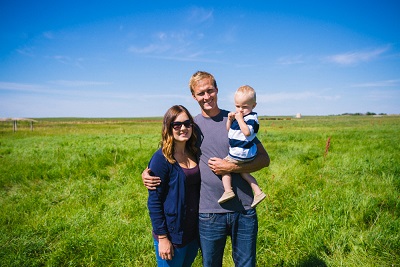
To purchase their products or obtain details on seasonality, sizing and pricing, you can contact them directly through their website. You can also follow them on their Facebook page and Instagram account.
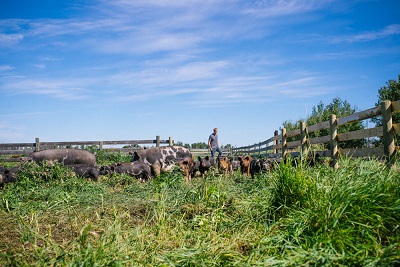
How Redtail Farms Began
Ian and Dana farm the land that Ian's grandfather and father grazed animals on. While much of Ian and Dana's approach to the land is similar to his grandfather's process, Ian's father Richard farmed more conventionally, running a large feedlot. After a few years of doing so Richard decided that his heart was not into that style of farming. He put all the land back to pasture grass and began to focus again on the health of the land and the individual animals he grazed. This stood out with his contemporaries and was in many ways a very unconventional move. For the past 30 years Ian has watched the number of farmers decrease in the area. This is linked to two intertwining factors: fewer young people are taking up farming and farming is beginning to be more industrialized on a larger scale.
Choosing to run a small farm means Ian and Dana have to do things differently. Having a relatively small land base (buying more land isn't financially viable in their area), they have to really make the most of the land they graze and care for it in a different way than large scale farms. Everything they do focuses on making the land healthier and more productive.
Ian inherits the experience and lessons learned from both his father and grandfather in Redtail Farms. By meshing the wisdom of his grandfather and father with new technologies he is working to make the farm more efficient while staying true to their responsibility to take care of the land.
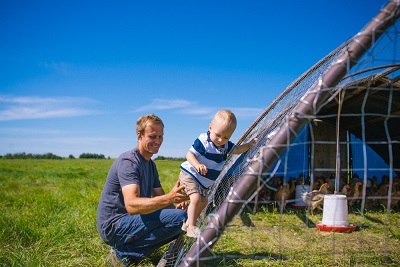
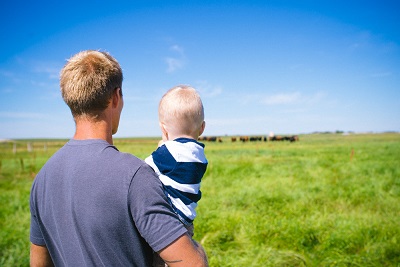
Their approach to farming
At the core of their goals for Redtail Farms is the nutritional value of their product. They want to make sure they're providing to their consumers the highest nutritional value they can in their food and that begins with the soil.
Historically, native prairie in the area has had 12-15% organic matter and that has dipped in many places down to as low as 5%. Ian sees it as his responsibility to bring his land back up to those original levels. His focus is regenerative agriculture and feels herbivores are the best tool for rebuilding that nutrient rich top soil. In their grazing practices, Redtail tries to mimic the grazing style of the buffalo when the land was all native prairie. Huge bison herds would come into an area and they'd graze one section heavily for days. The land would get trampled down and their manure and urine would get pummelled into the soil. After that they'd move on and it might be years before they returned to that exact spot. The difference is that in conventional grazing, fewer animals are often grazing much larger sections of land for longer periods. This means that the cattle will only eat the plants they like best and soon the land is turned into a mono culture pasture.
Everyday Ian moves his cattle, pigs and chicken onto different pieces of grazing land. This way each piece of his pasture gets a full day worth of trampling and manure and urine spread on it as well as encouraging the diversity of plants growing on his land. Ian describes his style of grazing as a kind of dance between the weather, the plants and the needs of his animals.
While this approach is very work intensive, you can see the difference in the biodiversity of his grazing land. From the birds to the insects to the microbes in the soil, each part of the environment brings a benefit to the land. Ian believes that the more species they can have thriving in their pasture, the better the environment for everything involved.
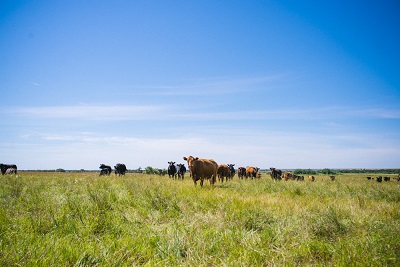
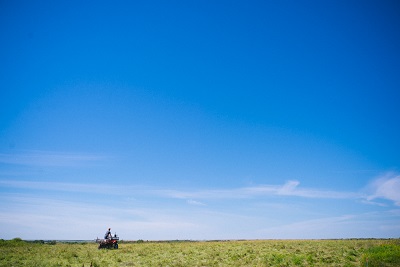
Their products and their land
Ian and Dana currently pasture graze about 30 Berkshire pigs. A mix of barley, peas and forage turnip are seeded for the pigs to graze on and no pesticides, herbicides or fungicides are used on the grazing crops. The pigs themselves act as the harvesters for the crops and in turn their manure and urine help enhance the soil's health and productivity. The pork itself offers a particular nutritional complex based on the animals' diet. From the insects and crop they eat to the minerals and vitamins found in the pasture soils, they reflect the land they were raised on. This year Redtail farms is one of 15 Alberta operations sending samples of their products to labs in Toronto to be tested for their omega 3 content. These tests will give them a whole analysis of the vitamins and minerals in the meat itself.
Likewise, their approximately 500 chickens (cared for by Ian's sister), are moved every day onto fresh grass. They're great to have in the pasture because the grass is healthier where the chickens have been grazing each day due to the vast amounts of nitrogen their manure adds to the soil. Chicken are omnivores and need more than fresh grass to eat so they also have grain available to them and a feast of insects living in the pasture provide a lot of protein for their diet. Many modern broiler chicken breeds are bred simply for fast weight gain, so Ian had to find a different variety that could graze well. While his birds don't get as big and are slower growing, they're better suited to moving in the field and provide a different kind of eating experience for the consumer in terms of complexity of flavour and nutritional value per pound.
While Ian enjoys running pigs and chickens, the beef cattle are really where his heart lies. It takes roughly 27 to 29 months to finish a Redtail Farms beef while a feedlot raised animal typically takes only 18 months. Learning to finish beef animals on grass takes a lot of experience. Ian is part of a small group of producers who are choosing to do grazing differently. It takes a lot of trial and error but he says, “if we don't do it, I don't know who will”. Ian practices holistic management of his herd which means he shies away from using many conventional methods of treating animals. Even when those treatments don't affect the meat of the animal, they can pass through the animal's system and through their manure they enter the soil. Because the health of the soil is at the heart of the Redtail's bigger picture approach, he is very cautious when applying anything to his herd that could affect any part of the biosphere they're living in.
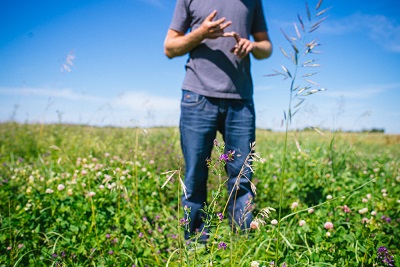
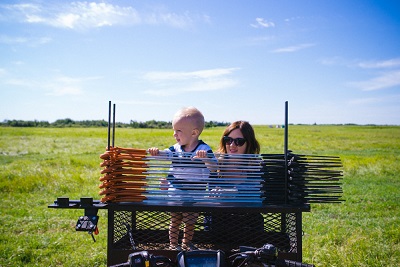
Their relationship to customers and role in the community
This holistic approach doesn't stop at the animal's or the land's health. It takes into consideration the people involved. The big questions Ian has to keep in mind here is how his approach effects his family, his neighbours and his community. While a farm must be financially viable to be sustainable, he stresses that he is also always balancing the health of the animals, the land and the people involved.
They love the direct marketing aspect of their business because it is a natural way to create community around food. They want to work with their community not just to provide a great product but to also provide learning experiences for them. Redtail hosts a field day each year and invites their customers to come experience their operation first hand. It gives them a chance to be completely open with their community and to help them better understand how and why they do what they do.
Most of Redtail's customers are based in Calgary and they're mostly individual families. Being a young family themselves, Dana stresses that it's important to them that their product be accessible to young families. Choosing to produce and sell meat in a different way means that education is a key part of their job. Many families who want their product also need to learn how to utilize their product. Buying whole animal meat as a consumer, means gaining considerable knowledge in everything from storage to preparation if you're going to make the most of your purchase. Dana and Ian do their best to help educate their customers in everything from how to cook a blade roast to how much freezer space they'll require. Redtail's customer base has mostly been built up by word of mouth and Ian and Dana simply getting out there and talking passionately about what they do. The relationship with their customer comes first.
Social media is increasingly becoming a tool to connect with their customer base because it allows them to involve the consumer in their process. Ian can post daily photos of what is happening at the farm on Instagram and his customers can begin to understand their process and create an emotional investment in it. Their goal is to be open and honest with their community and they do their best to share both the beauty and the hardships of their operation through social media platforms. This not only helps consumers get to know Redtail specifically but also increases their knowledge of the industry as a whole.
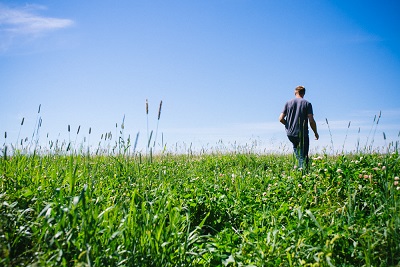
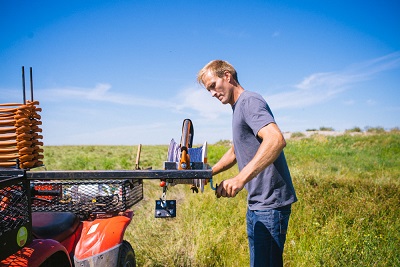
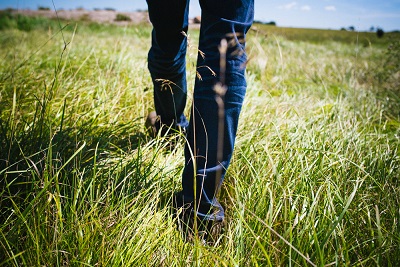
The future of Redtail Farms
One of the challenges for young farmers is that land is at a premium. Farmers with a smaller land base need to be more creative with how they farm in order to be a sustainable business. Ian believes this different way of thinking and the new ideas and approaches coming from youth in agriculture is what's needed to keep the industry alive, active and relevant to the community they serve.
“Listen to those birds and all those insects. . . there is so much life going on here right now. There's just a whole world we can't even see.” Ian Griebel
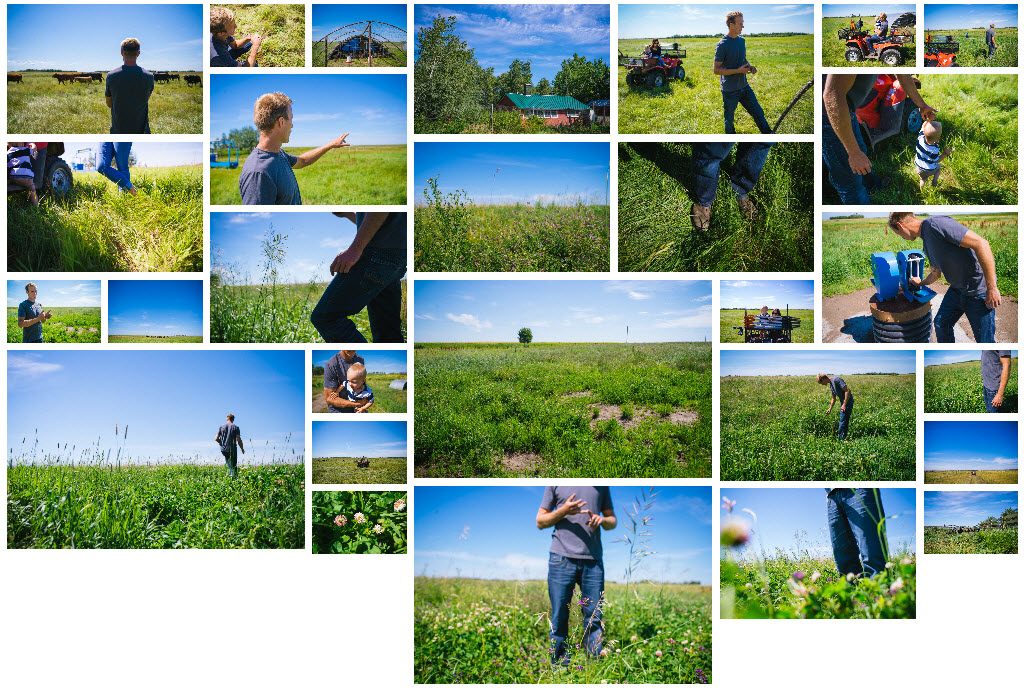
 |
|